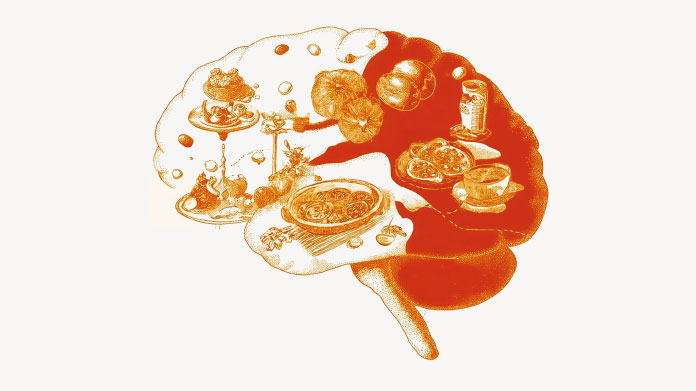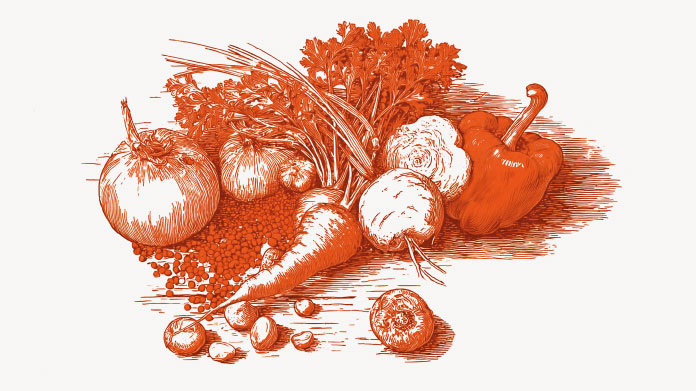How can you find out a food’s nutritional value?
Struggling to decipher the labels on your cereals, fruit juices and canned products, etc? Read on to discover how to properly understand and analyze a food product’s nutritional value.

Nutritional information: your guide to food product labels!
The nutritional information on a label is essentially a list of the amount of nutrients contained in that product. Provided by the manufacturer, and displayed on the back of the product, it is usually presented as a table rather than in linear form.
Since December 2016, it has been mandatory to display such information on pre-packed foods sold in France, though this is not the case for food sold in markets or by artisan butchers or bakers.
This listing of nutritional information is in force in the EU and North America (the United States and Canada), but does not necessarily apply in all countries.
At the very least, it specifies, per 100g or 100ml of the product,:
- its energy value (in kcal or kJ) ;
- its fat or lipid content (in grams) ;
- its saturated fatty acid content (in grams) ;
- its carbohydrate content (in grams) ;
- its sugar content (in grams) ;
- its protein content (in grams) ;
- its salt content (in grams).
In addition, it sometimes shows the amount of mono or polyunsaturated fatty acids, polyols, starch and fibre. Vitamins and minerals present at significant levels may also be included.
These tables are designed to provide you, the consumer, with clear, legible information on what you’re eating. But you still need to be able to interpret it correctly!
Macronutrients, the energy trio
Macronutrients are the only substances that fulfilll the body’s calorie needs: proteins, carbohydrates and fats.
Proteins
Providing 4 kcal per gram, proteins can be described as the building blocks of our cells. They help to maintain muscle mass and healthy bones(1-2), and are primarily found in animal-source products, soya and pulses. To boost your intake, you could also consider taking a protein supplement (such as whey.
Carbohydrates
Carbohydrates are usually divided into two groups:
- simple carbohydrates (fructose, galactose, sucrose…) which the body absorbs rapidly, intake of which should be limited;
- complex carbohydrates (starch…) which are digested more slowly and which should be prioritised.
Both types provide 4 kcal per gram. Providing fuel for the brain, they help maintain normal cerebral function (3). In nutrient tables, both types are amalgamated under the ‘carbohydrate’ listing. To isolate a product’s simple carbohydrate content, you need to look at the listing for ‘sugars’.
Fats
Long demonised, with 9kcal per gram, fats are nonetheless essential for physical integrity. They not only form energy stores in the body’s fatty tissues, but also give structure to our cellular membranes (4). But his doesn’t mean we should fill up on croissants and cooked meats! Better to go easy on the saturated fatty acids (keeping to less than 20g a day) and includemonounsaturated and polyunsaturated fatty acids in your menu instead (5-6).
What about fibre?
Fibre occupies a special place. A type of carbohydrate, it has the particular feature of being non-digestible and is thus calorie-free. But this certainly doesn’t mean it’s unnecessary! Fibre ‘sits’ in the gut, positively influencing a number of biological processes (7). Fruit, vegetables and whole grains are excellent sources, but fibre supplements can also increase your intake (such as Organic Acacia or Fructo-oligosaccharides).
Micronutrients, small but mighty
Unlike macronutrients, we only need small amounts of micronutrients. They have no energy value, but support numerous biochemical reactions essential for good health.
They include, of course, the famous vitamins which, between them, fulfilll many roles: A, B1, B2, B3, B5, B6, B8, B9, B12, C, D, E and K. Vitamin C, for example, (of which Liposomal Vitamin C is composed) supports normal immune system function (8). Vitamin B1 or thiamine (found in a highly-bioavailable form in the supplement Benfotiamine), supports normal energy metabolism, as well as healthy heart and nervous system function(9).
Also playing their part are the minerals and trace-elements: calcium, magnesium, potassium, iron ... (10-12) Of these, it is only the amount of sodium (or its equivalent salt, which you can find by multiplying the sodium figure by 2.5) that has to be included in the nutritional information on labels.
To gain maximum benefit from your mineral-vitamin intake, you can definitely take advantage of multivitamin supplements (such as the formulation Daily 3, which contains 12 vitamins and 8 minerals, along with numerous phytonutrients).
What exactly are Reference Intakes?
Sometimes, manufacturers also indicate the nutritional value per serving. In this way, the product’s contribution to a daily nutrient intake can be expressed as a percentage of the recommended daily amount (RDA), now renamed Reference Intake (RI) or Dietary Reference Value (DRV). These values are applied consistently throughout Europe.
For example, 30g of Emmental contains approximately 8.5g of protein, equivalent to 17% of the daily reference intake for protein of 50g.
Note, however, that RIs are based on adults with energy needs of 2000 kcal/day. While these values make it easier for the consumer to understand, they do not reflect particular needs related to sex, age or level of physical activity.
To identify a Dietary Reference Value) more specific to your particular profile, you can use the EFSA’s interactive tool (available in multiple languages).
Nutri-Score: the ‘at-a-glance’ traffic light
Nutri-Score is an optional device for manufacturers which offers a visual representation of the nutritional profile of a processed product. The product is given a letter from A to E, on a color-coded background ranging from green to red.
It is used in France, Belgium and Spain, but not, so far, in Italy or the United States.
Apps for clarifying nutritional values
There are also mobile apps that can help you to make healthy choices in the supermarket. When you scan a product’s barcode or type its name, you get an overall rating of its nutritional quality. What’s interesting is that inputting unhealthy products sometimes prompts alternative suggestions. The best-known of these apps include Yuka launched in France in 2017 (available at present in French, English and Spanish).
References
- Stokes T, Hector AJ, Morton RW, McGlory C, Phillips SM. Recent Perspectives Regarding the Role of Dietary Protein for the Promotion of Muscle Hypertrophy with Resistance Exercise Training. Nutrients. 2018;10(2):180. Published 2018 Feb 7. doi:10.3390/nu10020180
- Bonjour JP. Dietary protein: an essential nutrient for bone health. J Am Coll Nutr. 2005 Dec;24(6 Suppl):526S-36S. doi: 10.1080/07315724.2005.10719501. PMID: 16373952.
- Wang C, Szabo JS, Dykman RA. Effects of a carbohydrate supplement upon resting brain activity. Integr Physiol Behav Sci. 2004 Apr-Jun;39(2):126-38. doi: 10.1007/BF02734278. PMID: 15759600.
- van Meer G, Voelker DR, Feigenson GW. Membrane lipids: where they are and how they behave. Nat Rev Mol Cell Biol. 2008;9(2):112-124. doi:10.1038/nrm2330
- Nettleton JA, Brouwer IA, Geleijnse JM, Hornstra G. Saturated Fat Consumption and Risk of Coronary Heart Disease and Ischemic Stroke: A Science Update. Ann Nutr Metab. 2017;70(1):26-33. doi:10.1159/000455681
- Schwingshackl L, Hoffmann G. Monounsaturated fatty acids and risk of cardiovascular disease: synopsis of the evidence available from systematic reviews and meta-analyses. Nutrients. 2012;4(12):1989-2007. Published 2012 Dec 11. doi:10.3390/nu4121989
- Barber TM, Kabisch S, Pfeiffer AFH, Weickert MO. The Health Benefits of Dietary Fibre. Nutrients. 2020;12(10):3209. Published 2020 Oct 21. doi:10.3390/nu12103209
- Carr AC, Maggini S. Vitamin C and Immune Function. Nutrients. 2017;9(11):1211. Published 2017 Nov 3. doi:10.3390/nu9111211
- Dhir S, Tarasenko M, Napoli E, Giulivi C. Neurological, Psychiatric, and Biochemical Aspects of Thiamine Deficiency in Children and Adults. Front Psychiatry. 2019;10:207. Published 2019 Apr 4. doi:10.3389/fpsyt.2019.00207
- Al Alawi AM, Majoni SW, Falhammar H. Magnesium and Human Health: Perspectives and Research Directions. Int J Endocrinol. 2018;2018:9041694. Published 2018 Apr 16. doi:10.1155/2018/9041694
- Cormick G, Belizán JM. Calcium Intake and Health. Nutrients. 2019;11(7):1606. Published 2019 Jul 15. doi:10.3390/nu11071606
- Stone MS, Martyn L, Weaver CM. Potassium Intake, Bioavailability, Hypertension, and Glucose Control. Nutrients. 2016;8(7):444. Published 2016 Jul 22. doi:10.3390/nu8070444
Keywords
2 Days
They have great products.
They have great products.
Vickie
2 Days
Great Shipping Time!
You Have A Great Shipping Time! Praise The Lord!
DMHoge
4 Days
Doctor Recommended!
Good pricing, very good availability, doctor recommended (couldn't find what I needed anywhere else), and it took only a week to arrive (which I can't complain about).
Al
4 Days
Great product and fast shipping
Great product and fast shipping
Marie
5 Days
New customer 1
I got my order fast and on time.
SA
6 Days
Great Service
Fast, good communication, as promised.
Juli
10 Days
Thrgood product website is easy to use and shipping…
Thr website is easy to use and shipping is very fast.
Richard Kienzle
11 Days
I like and recommend it!
I like and recommend it!
CRUZ Francisco
11 Days
Really like that they don’t have…
Really like that they don’t have fillers in their supplements. Great customer service and quality products
Becky E. Stiles
18 Days
Catalase.
Great catalase product.
John Yagi
29 Days
I always receive my products on time.
I always receive my products on time.
Kelly
34 Days
Fast service and good products
Fast service and good products
PERCY
38 Days
fairly quick service
fairly quick service. Decent prices
Vyril A
39 Days
Always pleased with SuperSmart products and service
Product always arrives timely and in good shape. Company is easy to work with. Website is user-friendly.
Diane
40 Days
The h pylori supplement has helped my…
The h pylori supplement has helped my digestive issues. I was diagnosed with h pylori more than once. Also was hospitalized with h pylori several times. Even after taking prescription meds for this condition I still had ongoing digestive issues. So I decided to give this product a try. It has helped with the bloating and inflammation in my stomach and chest. So I gave it a 4 star rating. It helps to calm the pain in my stomach and also acid reflux pains. It is a good product and I would recommend.
Sandra



